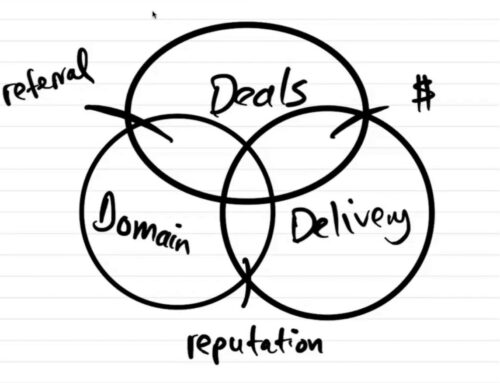At its simplest, hiring for your team comes down to being able to effectively describe your ideal candidate. However, for teams and hiring managers looking to add rigor to and remove bias from their interview process, describing that ideal candidate involves a great deal of introspection, peer review, and iteration. Fortunately, there’s a procedure you can follow.
This guide is a tool for hiring managers and leaders to design a bespoke interview process for any role in their organization. This guide won’t be prescriptive of aspects such as how many interviewers should be on a panel, what should be covered in an on-site interview versus a phone screen, how many types of interviews a candidate should go through, or where to source resumes. It will, however, bring the entire team through the thought process of building the ideal job description and tying that to an objective (and repeatable) measure of evaluation.
By focusing on values alignment first, you will be able to design a consistent and repeatable framework that will apply to any role you have open.
Values Alignment, not Cultural Fit
One of the most subjective aspects of the hiring process is understanding how a new individual might assimilate into the team. To assess this, many teams look for “culture fit” or the more-enlightened “culture add.” Unfortunately, subjectivity and bias continue to inject themselves into candidate evaluation because culture, if not properly defined, is subjective.
In order to start making more objective hiring decisions about cultural alignment, teams and organizations must define their values and the behaviors that embody them. Most companies have a set of defined values to lean on, and these are a great place to start. As companies grow, however, sub-cultures can and will begin to emerge at the organization or team level, and these are equally important to define.
For example: while there may be a set of global values defined at the company level, a customer service organization may have a complementary — but more specific — set of values. Writing these down as a bulleted list is the crucial first step in defining the culture that you want to build and hire into. These values on their own, though, do not prescribe the type of behavior you want from the team, and therefore it is imperative to define them further:
Values are the aspiration: who we want to be. Then you ask: How do we need to behave to be who we want to be? That’s more difficult. And that’s why it is so important to be precise and to put the “why” into your values. Uber had this value: Do the right thing. I don’t know what was behind that. But on its face it doesn’t tell you much about how to behave. Is the right thing to stay true to what you promised your investors? Or is it to tell the truth to the customer?
The samurai were very detailed about what they meant by politeness: It is the best way to express love and respect for somebody. And then here are all the things you have to do, like how you bow at the tea ceremony. Contrast that with somebody saying, “Our value is we are high integrity” or “We are here for one another. ” Those don’t mean anything.
For every value you have listed, provide real-world examples of what it looks like to live those values. If Integrity is a value, you may define the behaviors as “Do not gossip or talk badly about someone” or “If you find yourself in a conflict of interest, get out of it as soon as possible.” It may be easier to create the first draft of these values and behaviors on your own, but it will quickly become important to gather other perspectives with your team, your leadership, HR, and anyone else whose feedback you value.
Defining The Role
For every open role on the team, describe the ideal candidate for that role in detail — before ever looking at a resume. This ideal candidate is going to consist of a combination of skills and qualities that will ensure their success in this role. It is not enough, however, to simply list a set of arbitrary job requirements; you must connect each item back to one or more of the company or team values that you defined.
At this point, you may find a requirement for the role that is difficult to relate to a previously-defined value. For example, perhaps the ideal candidate will know a specific programming language, have mastery of a piece of software, or be familiar with how to work in a particular framework. These alone are not bad requirements to have (especially if it enables them to do their day-to-day job), but a more thorough exploration of “why” is important. This situation may warrant iterating, adding, or modifying the values that you came up with.
For example, perhaps it’s important to have this skill because you need your team to stay current with modern technologies? The value (and supporting virtues) could relate to Technical Competence. Or perhaps the importance comes from enabling the team members to share the workload or solve complex problems collaboratively. In that case, your value may relate to Collaboration.
This will weed out certain requirements such as “6+ years of experience,” as this becomes nearly impossible to tie back to a value. Plus, you must ask yourself: if you found a rockstar candidate with 5 years of experience, would this requirement disqualify them?
Going through this exercise is a great start to writing and publishing the public-facing job description for advertising the position as well. Bonus points: use a tool like Textio to help ensure you are using the right language to attract the best candidates to the role.
Gathering perspectives at this stage is also important. While you can make a first draft alone, it may be equally as valuable to go through this exercise with your proposed interview panel. A panel built of cross-functional peers is going to have valuable insight into how to describe their ideal future-coworker and who will best help the team’s success. Be mindful that as you go through this process, the interview panel may need to evolve by the time you are ready to start interviewing.
Assessment and Evaluation
Once you have your ideal candidate well-defined, the next step is to define the questions that will evaluate those job requirements. Similar to how every job requirement must map back to a value, every question must assess one or more of the job requirements (and together they must achieve full coverage of all of those requirements). Each interviewer will bring a unique perspective to the table, and this can be a useful strategy when finding areas for each interviewer to evaluate.
Similar to how each value is backed up by behaviors, each question must also be backed up by its own justification. The interviewer must distinguish between a satisfactory response and a non-satisfactory response for every question. One useful methodology requires documenting examples of “bad”, “good”, “better”, and “best” answers for each question. Whether the question is anecdotal* (asking about a candidate’s past experiences), situational (where you ask a candidate how they would act in a hypothetical scenario), or technical (detailing the thought process and solution to a problem), the interviewer must be able to explain what they will be looking for in a response. This is also useful in detecting and avoiding unconscious biases.
Once all the questions are listed, ensure that you have covered all skills and qualities you defined for this role. This exercise is fairly straightforward:
- For every question, walk through the line items in the ideal candidate description.
- Mark each line item in the job description with a checkmark (✓) if this particular interview question will help to evaluate or assess it.
- There may be situations where the interview question may or may not be able to help evaluate or assess a particular skill or quality. One example of this is if you will only be able to assess a certain quality of the candidate if they make it sufficiently far in the question. In this case, use a question mark (?).
- Look at the list and see if you are over-indexed on evaluating one particular area (a large number of checkmarks compared to others). Similarly, look at the list and see if you are under-indexed on evaluating any particular areas (a low number of checkmarks and/or question marks). These may be signs that you need a more diverse set of perspectives on the interview panel or different questions.
Once you have iterated and gained adequate coverage of all the areas you want to evaluate, the team will use the same questions for every candidate interviewing for this role. Consistency is incredibly important in the interview process. If at all possible, maintaining the same panel across all candidates is ideal. However, by introducing this level of documentation and rigor into the interview question selection process, even if certain interviewers are unavailable, candidates will still be able to receive a consistent evaluation.
Lastly, this artifact that you and the team have created will become the rubric used for scoring each candidate’s performance. Choose a grading scale to be consistent across all questions and interviewers. A simple feedback format is:
- A numeric rating for each question (1-5)
- Qualitative reasoning for each question’s rating
- An overall numeric rating for the candidate with a hire/no-hire decision
- A qualitative summary for your hire/no-hire decision
* For anecdotal questions, consider letting the candidate know what they’ll be asked in advance: https://twitter.com/ephemeragrrl/status/1227291077864017925?s=19. You are evaluating the candidate on their experiences, not the ability to come up with representative stories on the spot.
So, something lovely. About 6 months ago now @jesslynnrose tweeted the question “are you giving your interview questions to the candidate in advance? If not, why not?”
So we started doing that. But what we weren’t doing was asking the candidates if it helped. So I started asking
— ephemerawoman (@ephemeragrrl) February 11, 2020
Feedback and Iteration
Now that you have defined your values, described your ideal candidate, and listed the questions your panel will use to evaluate them, it is imperative that you share these within and outside the team, specifically anyone who will interact with or be affected by the new hire. Open this document up for comments and edits for a period of time so that others can weigh in. Don’t hesitate to invite the opinions of stakeholders, HR business partners, other hiring managers, and anyone else who may have a vested interest in this process. Don’t be discouraged if these new perspectives compel you to modify your list of values, introduce or edit items in the job description, or even make changes to the interview lineup or questions. Revisit any stage of this process and iterate until you are confident in who you are looking for and how you’ll know they’re the right one.
The Artifacts You’ve Created
By working through this process for each role for which you are hiring, you will have:
- Defined and documented your culture consistent with company and team-level values
- Written a job description that is directly aligned to those values
- Built a cross-functional interview panel with deliberate areas of focus
- Equipped those interviewers with questions and a grading rubric to ensure a fair, objective and consistent evaluation across all candidates.
From here, you should be able to advertise your job description and confidently move into the resume review and hiring process. Don’t worry if after a few interviews you need to refine any part of this; perspective and team needs will always evolve. Publish and version these artifacts internally at your company so you can see how they change over time. Regardless of what changes are introduced, the most important part is to maintain the rigor and discipline that you and the team started with through this process.





